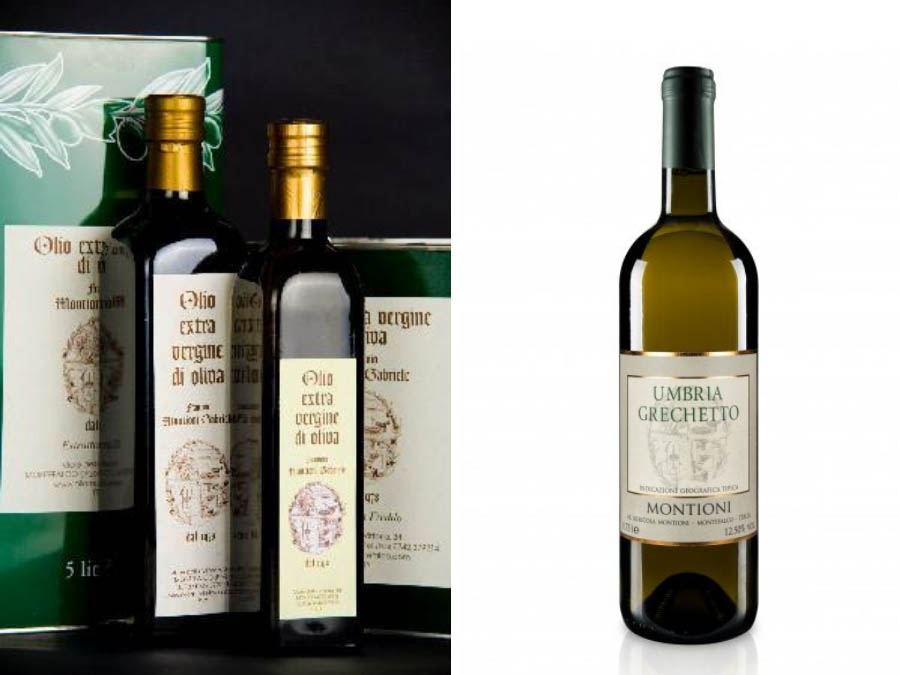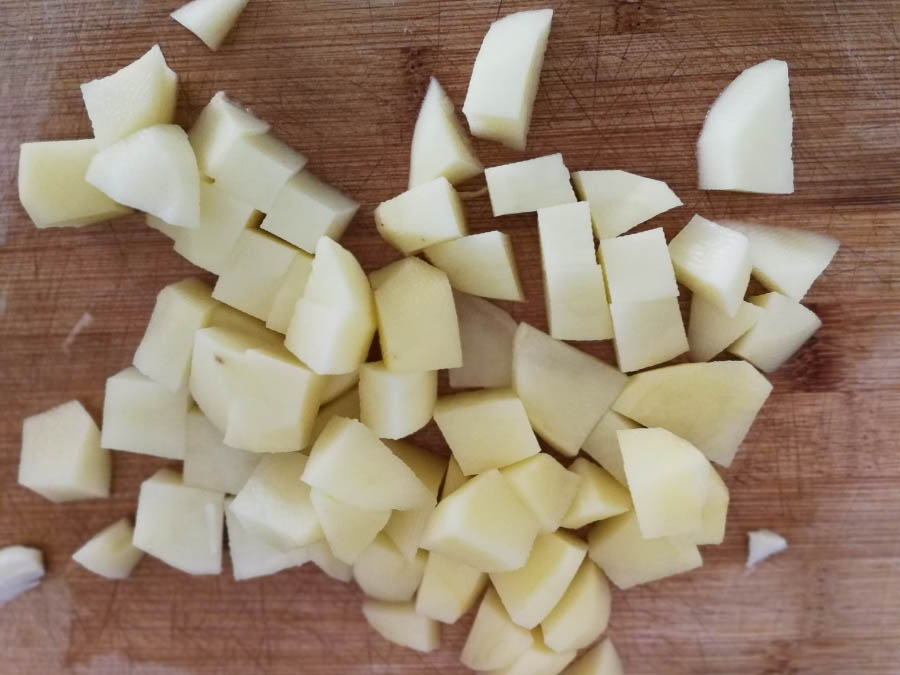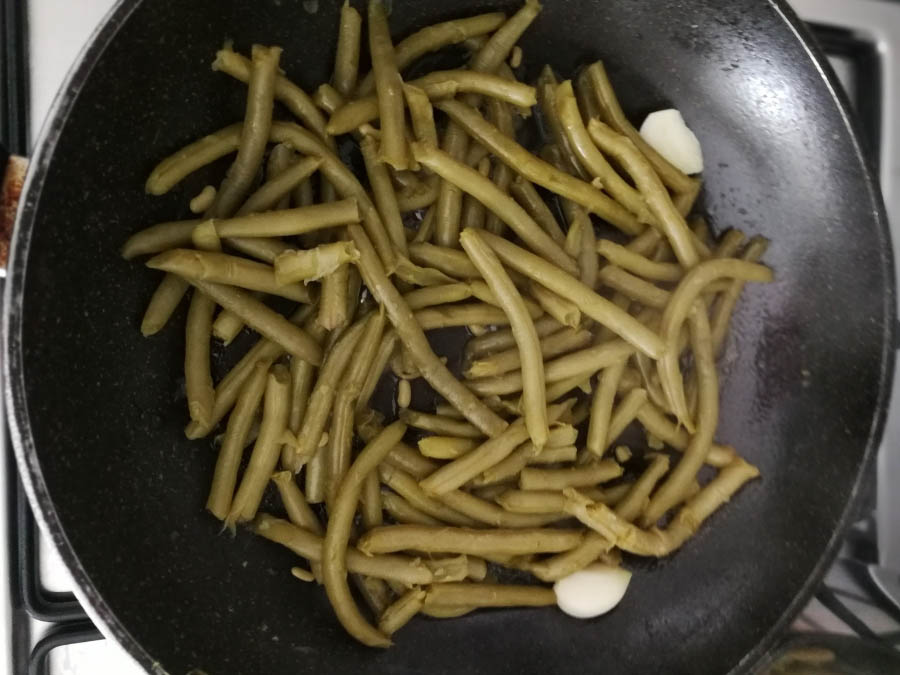The original recipe of pasta with pesto “alla Genovese”
T h e o r i g i n a l r e c i p e o f p a s t a w i t h p e s t o “ a l l a G e n o v e s e ”
Here we are again, on our blog – Between Kitchen and Cellar – with the new recipe of the week!
Last week we talked about a curious variation of “Pesto alla Genovese”… with red basil!
But today, on the blog of the Azienda Agricola Montioni, we want to use this tasty sauce to make the original pesto pasta recipe even more delicious!
Indeed, the variation will only be given by the sauce, which as we saw in the last blog recipe, is spicier and tastier than the classic Ligurian pesto.
Maybe not everyone knows how pesto pasta really originated, in that case we give you a little help… not just pasta and sauce!
Find out the other ingredients you will need in order to cook one of the most famous dishes in the Italian culinary panorama!
RECIPE: TAGLIOLINI AL PESTO – original recipe with potatoes and green beans
Ingredients (serves 4)
– 350-400 gr pasta (tagliolini in this case)
– 250 gr green beans
– 300 gr potatoes
– 150-200 ml Montioni Extra Virgin Olive Oil (cold-pressed)
– 2 cloves of garlic
The Genovese pesto, made with the last week recipe (you can find it here), will then be added to these ingredients.
Pairing Between Kitchen and Cellar
The perfect pairing for an excellent pasta with Genovese pesto is a young white wine, to clean away the fat.
It is precisely for this reason that we recommend our Montioni Umbria Grechetto I.G.T, with a fresh and round taste, which goes perfectly with first courses like this.
On the other hand, Montioni extra virgin olive oil is the special element for making a first course like this, in which oil is the real protagonist together with the aroma of basil and the quality of the pasta.
Cold-pressed oil, from a raw material directly hand-picked from the Montionis’ olive grove, in Umbria.



Method
1) Peel and cut the potatoes into cubes, about 2-3 cm each, put them in a pot with boiling water for a few minutes.

2) Combine the potatoes with the chosen pasta (in this case tagliolini) and cook it in the same pot with the boiling water.
3) Cut the green beans in half and boil them in another pot with boiling water for a few minutes.
4) Drain and place them in a non-stick pan together with the two cloves of garlic, adding Montioni EVO oil; cook them in the pan for a few minutes. In this way, they will become crunchy and the garlic will give them flavour.

5) In the meantime, retrieve the red basil pesto, made with our recipe, and place it in a large baking pan where you will put the pasta together with the now cooked potatoes and green beans, taking care to eliminate the two cloves of garlic previously placed for flavouring.
6) Stir carefully and… voila! The original recipe of pasta with Genovese pesto is ready… but with an extra touch!

Have you ever tried tagliolini with pesto cooked in this way? Do you make other variations? Let us know in the comments!
Send us your traditional or innovative recipes together with photos and directions. We will post them on the Montioni blog – Between Kitchen and Cellar!

2) Aggiungere un cucchiaino di lievito per dolci, quindi amalgamare.
3) Foderare una teglia con carta da forno
4) Fare con l’impasto dei rotolini e poi unire i due estremi di ciascun rotolino per formare una ciambellina.

5) Ripassare la ciambellina nello zucchero, avanti e dietro, poi disporre sulla teglia.
6) Infornare le ciambelline a 190° per 7 minuti

Ed ecco pronte le nostre ciambelline al Sagrantino Passito Montioni!

L’abbinamento che vi consigliamo? Ovviamente un calice di Sagrantino Passito Montioni o, in alternativa, il nostro vino più amato ovvero il Sagrantino di Montefalco DOCG Montioni!
Alla prossima ricetta del blog dell’Azienda Agricola Montioni, Tra Cucina e Cantina!
On occasion, the winemaker may decide to leave them in if the grapes themselves contain less tannin than desired. This is more acceptable if the stems have ‘ripened’ and started to turn brown. If increased skin extraction is desired, a winemaker might choose to crush the grapes after destemming.
Wine is one of the most civilized things in the world and one of the most natural things of the world that has been brought to the greatest perfection, and it offers a greater range for enjoyment and appreciation than, possibly, any other purely sensory thing.
Ernest Hemingway Tweet
Removal of stems first means no stem tannin can be extracted. In these cases the grapes pass between two rollers which squeeze the grapes enough to separate the skin and pulp, but not so much as to cause excessive shearing or tearing of the skin tissues. In some cases, notably with “delicate” red varietals such as Pinot noir or Syrah, all or part of the grapes might be left uncrushed (called “whole berry”) to encourage the retention of fruity aromas through partial carbonic maceration.
The Grapes
The quality of the grapes determines the quality of the wine more than any other factor. Grape quality is affected by variety as well as weather during the growing season, soil minerals and acidity, time of harvest, and pruning method. The combination of these effects is often referred to as the grape’s terroir.
Grapes are usually harvested from the vineyard from early September until early November in the northern hemisphere, and mid February until early March in the southern hemisphere.
In some cool areas in the southern hemisphere, for example Tasmania, harvesting extends into May. The most common species of wine grape is Vitis Vinifera, which includes nearly all varieties of European origin. The most common species of wine grape is Vitis Vinifera, which includes nearly all varieties of European origin.

Manual harvesting is the hand-picking of grape clusters from the grapevines. In the United States, some grapes are picked into one- or two-ton bins for transport back to the winery. Manual harvesting has the advantage of using knowledgeable labor to not only pick the ripe clusters but also to leave behind the clusters that are not ripe or contain bunch rot or other defects. This can be an effective first line of defense to prevent inferior quality fruit from contaminating a lot or tank of wine.
Destemming is the process of separating stems from the grapes. Depending on the winemaking procedure, this process may be undertaken before crushing with the purpose of lowering the development of tannins and vegetal flavors in the resulting wine. Single berry harvesting, as is done with some German Trockenbeerenauslese, avoids this step altogether with the grapes being individually selected.
Crushing is the process when gently squeezing the berries and breaking the skins to start to liberate the contents of the berries. Destemming is the process of removing the grapes from the rachis (the stem which holds the grapes).
In traditional and smaller-scale wine making, the harvested grapes are sometimes crushed by trampling them barefoot or by the use of inexpensive small scale crushers. These can also destem at the same time. However, in larger wineries, a mechanical crusher/destemmer is used. The decision about destemming is different for red and white wine making. Generally when making white wine the fruit is only crushed, the stems are then placed in the press with the berries. The presence of stems in the mix facilitates pressing by allowing juice to flow past flattened skins.

Katerina Monroe
@katerinam • More Posts by Katerina
Congratulations on the award, it's well deserved! You guys definitely know what you're doing. Looking forward to my next visit to the winery!
